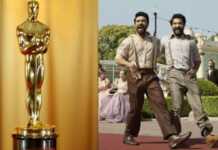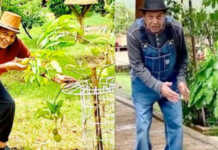Hi! My name is Anna and I’ve been living in the Chinese province of Shanxi for 2 years already. I teach English here in a local kindergarten. Every day, my 2 sons, who also attend this kindergarten, have to face some unusual rules and traditions.
I am going to tell ViralSection readers what kids’ experiences in kindergarten are like in China. It’s often very hard for them to be here because China is a country that is entrenched in strict discipline, and sometimes they even have to hide under their beds in class.
Many kindergartens work according to an “all-inclusive” system.
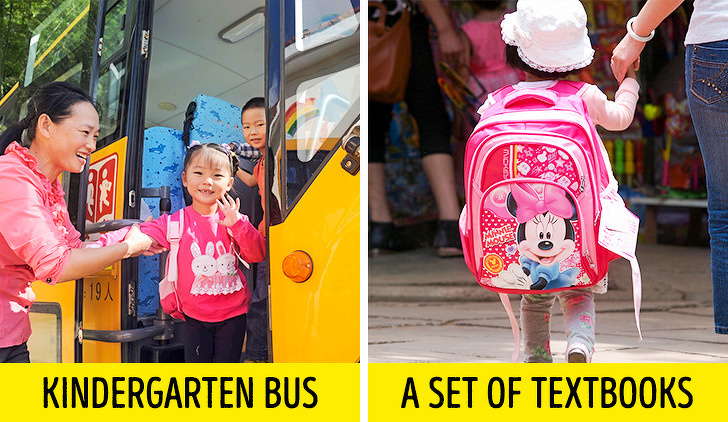
© depositphotos
Each parent wants to make the maximum contribution to the development of their child which is why private kindergartens are the norm for the average-income residents in China. Kindergarten is not a cheap thing here: one year of study in this place will cost about $1,700 — 4,500 in the province, and between $4,500- 6,500 in bigger cities.
For this money, a kid gets into an “all-inclusive” zone that includes: 5 meals a day, school bus transfers, uniforms, shoes, a backpack, a set of bedsheets and pillowcases, and a stack of colorful textbooks. You can only get into the school’s classroom by using a plastic card, and only during special hours. After their lessons, kids can stay for classes like Lego-construction, riding run-bikes, roller skating, basketball, and scientific experiments for an additional fee.
Parents are ready to do almost anything to get their kids enrolled in a good kindergarten. There have been cases in larger cities in China where residents in some areas lined up a few days prior to the registration start. They literally put up a tent on the school’s premises, took turns, and kept watch on when the registration started.

By the way, the “coolness” of a kindergarten class doesn’t depend on its size or location. A private kindergarten can be small and its playground might be located almost on the roof of the building it’s located in. For example, our kindergarten has 60 pupils, 20 in each group. Each group has 2-3 permanent teachers and an assistant.
Basically, teachers are young girls who are under 30, and assistants have a different age limitation which is 45 years old. These age limits were put into place because this work is considered hard. They are not allowed to come to work made-up or dolled-up wearing fancy dresses or beautiful hairdos. Teachers look more like older sisters here — they all wear the same brand sweatshirts or T-shirts, black pants, and sneakers. Their hair has to be tied back, and they cannot have their nails “done” — they could actually be fined for it.

During the first half of the day, kids have Chinese, English, mathematics, music lessons, they learn to read Chinese characters and recite poems. Teachers communicate in 2 languages with kids — Chinese and English. Every month kids have a progress check. If a kid has not learned the subject well, the teacher will be fined.
Once a month, kids take part in master classes like cooking national dishes or pottery classes. Every season there is a special event that involves parents: a visit to a bank, a post office, a farm, a dentist an office, climbing a mountain, competitions in parks, or foam parties right in the school yard.

Chinese kids have special water pistols and foam guns. Some parents come to these events with umbrellas and use them to hide from all the splashing.
There are also those who love active entertainment. Once, the kids’ fathers got pots with ladles and started a real water battle. The teachers could hardly manage to get the kids out of their way.
Kids can spend the whole day in street clothes and shoes.
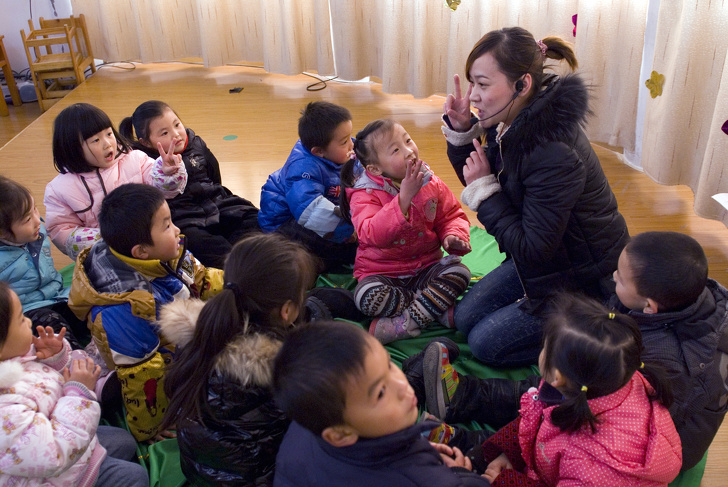
Kids in Chinese kindergartens don’t wear different shoes, no matter whether it’s winter or summer. In the winter, kids are brought to class in light trainers (sneakers) which is why they don’t feel hot inside. However, the air in the room quickly becomes heavy and dusty. Sometimes kids don’t even take off their jackets or coats and the reason is simple: many classrooms in the southern part of China don’t have heat (we live in the north of the country so it stays pretty warm in our classrooms).
Also, they don’t wear hats, even when the weather outside is below zero. No one even wears a hoodie, even if their kids’ ears are red. My sons are the only ones who wear hats and hoods.
Recently I read an announcement intended for parents and understood why kids in China barely wear any hats.
“The temperature outside has decreased. Pay attention to keeping kids’ bodies warm. Follow the principle ‘3 heat, 2 cold.’ Keep the back, the belly, and the feet warm.
By keeping kids’ backs warm we protect them from catching a cold since 1/3 of their body heat comes out through their head. When it overheats, the heat transfer decreases. The child might get dizzy, confused, and even lose consciousness, so make sure to keep their head cool.
Touch the collarbone. If it’s warm, it means the child is dressed properly.”
There is no such thing as a “kids’ menu.”
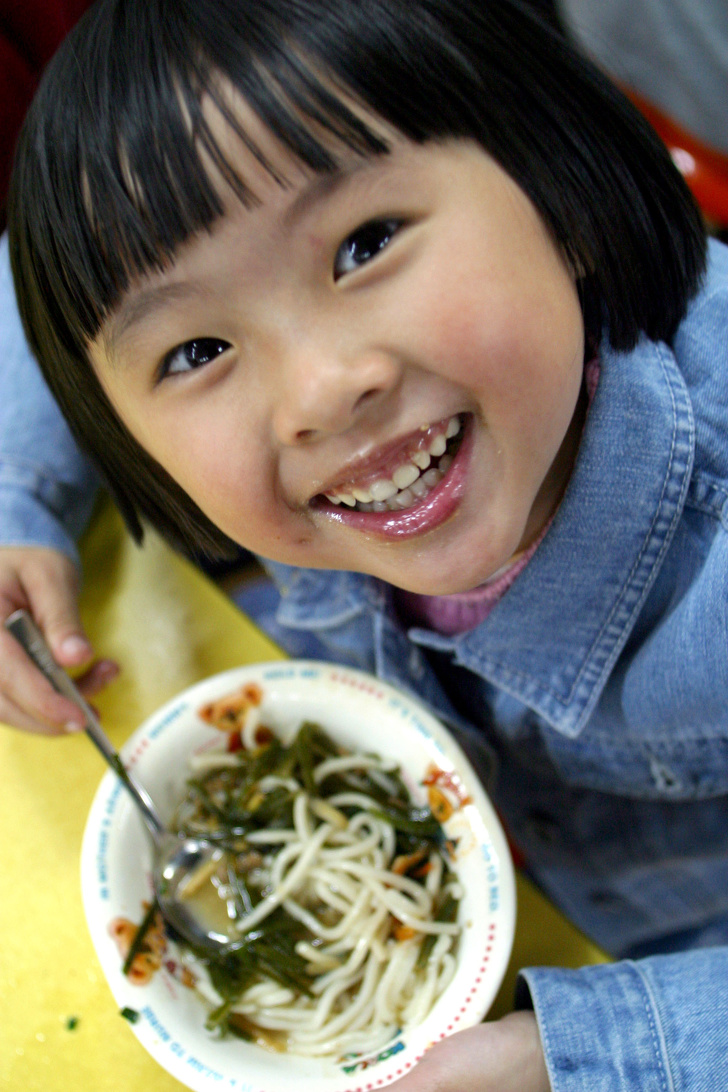
Kids in kindergarten are served ordinary Chinese dishes, with a minimum amount of spices. An ordinary lunch consists of soup, a plate of rice or noodles, and a bun. That’s it.
First, they need to eat their main dish, then “wash it down” with the soup. Children are only given water before going to the cafeteria. Many kids that are kindergarten aged can eat spicy food (starting from the age of 2). Every other week, the menu also offers shrimp.
Before each meal, the children fold their arms in front of their chest and say thanks for their food.
In Chinese kindergartens, a lot of attention is paid to national traditions. On the winter solstice day, everyone makes dumplings and eats them later. On the holiday at the beginning of autumn, teachers cut watermelon into round shapes (to look like the sun) for the children to eat.
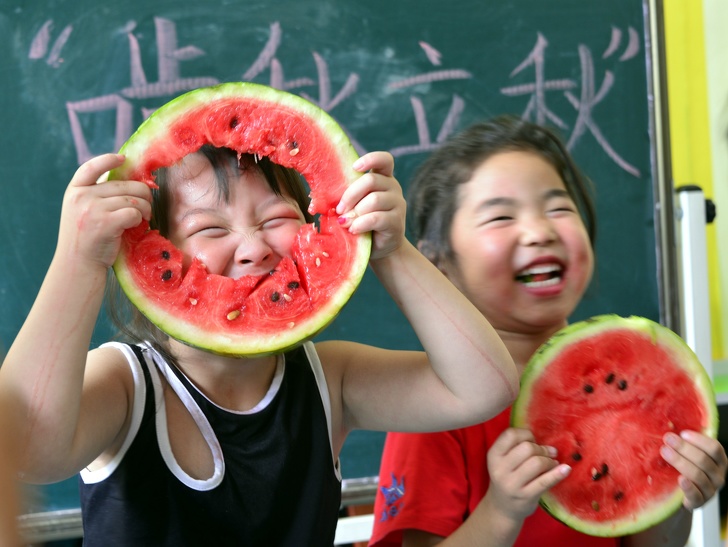
On March 21, with the start of the spring equinox, everyone tries to find their inner balance. The main thing to do on this day is to try to make raw eggs stand up in a vertical position so that they balance and don’t fall. You have to have a lot of patience and concentration to make this happen.
Kindergarten teachers shine a flashlight into kids’ mouths.

Parents sometimes try to bring in sick kids with fevers, because they need to go to work. That’s why they make huge efforts to prevent the distribution of microbes and to not let sick kids into the class. In most schools, there is always a medical worker standing right at the entrance to the building. The kids come up to them and habitually open their mouth, the throat of each kid gets carefully examined with a flashlight to check for any possible redness.
In addition, doctors are afraid of intestinal infections and hang up posters in the classroom telling kids how to wash their hands and monitor the cleanliness of their bodies.
Beds are used for both sleeping and safety exercises.

Children play, eat, and sleep in the same room. On the perimeter of this room there are small cots. Naptime lasts for about an hour and a half and some kids really fall asleep, others just lie on their beds and don’t make a sound. The discipline is very strict here which is why you won’t see pillow fights or kids jumping on the beds.
In some schools, at the end of the week, all the bedding from the mattress to the pillow, is taken home by the parents for washing.
Beds have one more interesting purpose — they can be used during safety lessons.
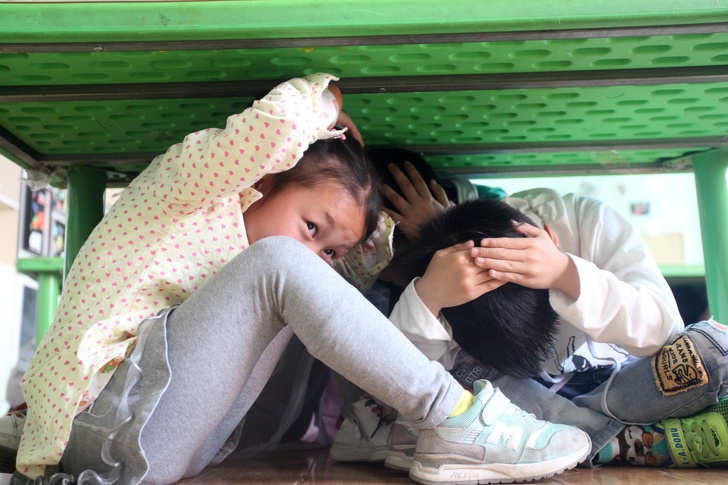
Earthquakes in China are not a rare thing and this is why kindergartens and schools hold mandatory safety drills where children are told how to behave if shockwaves begin. If there is a chance that the building might collapse, the best thing to do is to quickly run out into the street, cover your head with your hands. If the tremors are not strong, you can hide under a table or bed.
Children are also taught how to keep safe during a fire. They make the training really realistic by lighting a smoke bomb. The smoke covers everything, kids run around with wet towels covering their mouths and noses, some of them even cry. After that, everyone listens to a lecture from a firefighter or a teacher. The training ends with kids’ taking a powder fire extinguisher and extinguishing the flame in the barrel, in turns.
Children’s Day is celebrated at luxury hotels.
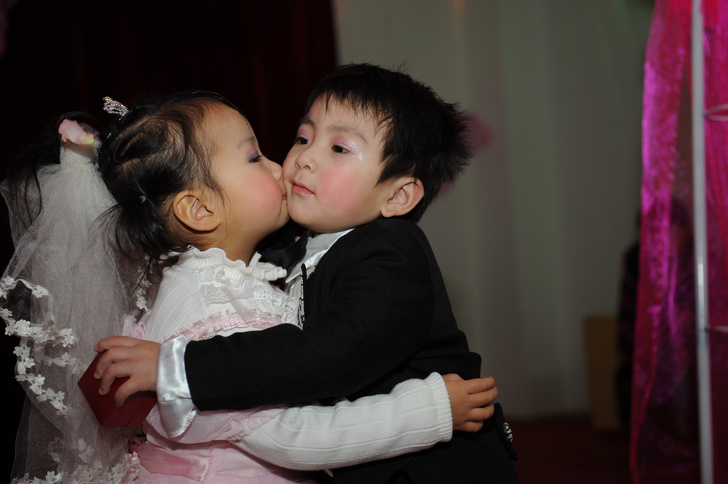
In Chinese kindergartens, International Children’s Day is celebrated as widely as New Year’s. Kids from ages 2 to 6 shine on the stage of townhalls or expensive hotels in fancy outfits.
Kids wear bright makeup and rhinestones glued to their faces for a bright performance. In the parents’ opinion, it looks sweet and beautiful. Girls get false eyelashes, apply sparkling eyeshadows, mascara, blush, and powder. From this list, boys are only missing false eyelashes — the rest is the same.
However, not all parents makeup their boys (approximately 50%), but when it comes to girls it becomes 100% (even those who are 2-3 years old).
The entire kindergarten comes to do morning exercises.
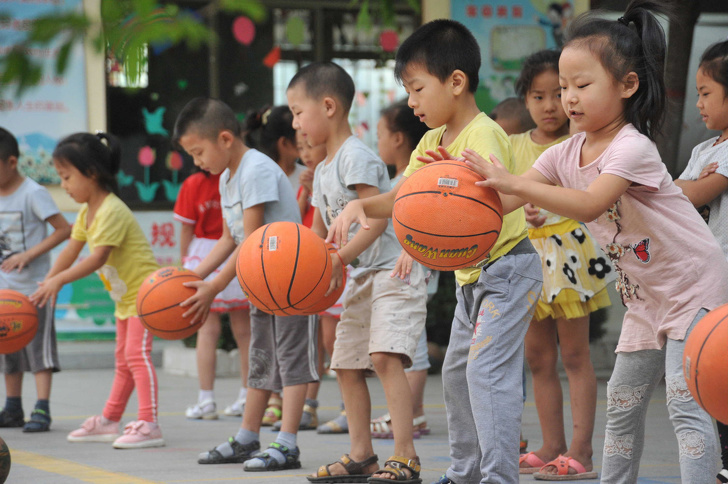
Kids in Chinese kindergartens don’t have to repeat the same boring exercises after the teacher every day. They do morning exercises with all the kids who attend the school. At 10 am, they start the music and kids, together with their teachers, perform the dance for 20 minutes. Every day, they play the same music and kids repeat these movements that they’ve perfected over time.
After the exercises, kids stand in line, hold the clothes of the kid standing in front of them, and return to their class. Older groups are taught to go after each other without clinging to each other’s clothes, they never go in pairs.
Unconditional obedience is required from all children.
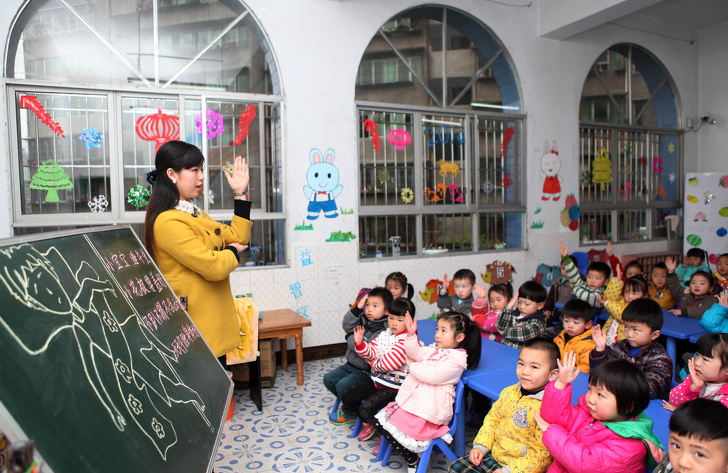
A kindergarten education is called “a vaccination” from kids egoism. In China, they believe that a child must learn to regulate his desires and match them to the rhythm of the group. The strict way that teachers sometimes treat children is often explained by the fact that it will be even stricter in real school.
Kindergarteners are required to sit silently during their lessons, to have good manners, and to abide by the rules for politeness. It seems there is nothing extraordinary about this, but breaking these rules will be followed by a punishment. Each teacher has their own methods. Some start to shout, others slap the kid’s back, push them in a rude manner, or pull the kid’s arm. Last year, my 5-year-old son was hit by a stick on his fingers because he wasn’t writing nicely during his lesson.
Generally speaking, treating kids rudely is not welcomed, either by the administration or the parents. But recently, the parents of kids from a senior group decided together that a stricter attitude toward their kids might be beneficial for them. This is because good behavior and good academic performance are the priority when they go to real school — which is not that far away.
Kids’ creativity often fades away because of the school’s strict discipline. When I offer them a choice during my lessons, instead of making a task list that they have to adhere to, they get confused and fall into a stupor. But when children understand the rules, they get a lot of pleasure from their work — it’s very apparent that they are not used to showing their individuality.
There is no indulgence toward parents either.
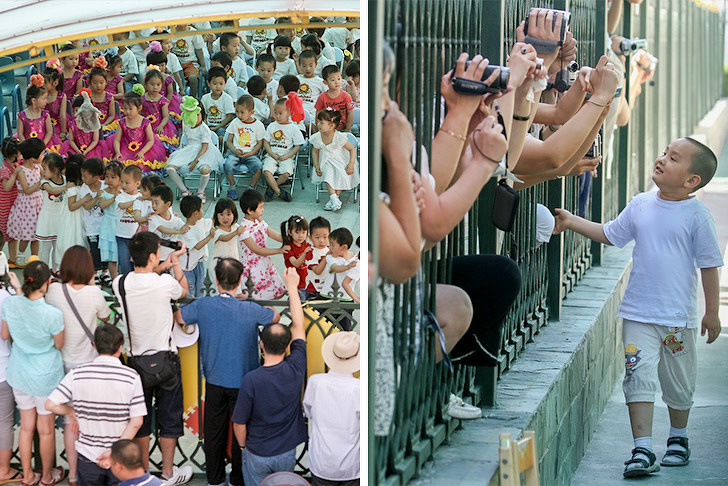
© depositphotos
The Chinese kindergarten education system is often criticized for its severity and overregulation. But parents believe that kindergarten workers are educated professionals who have no emotional attachment to the children, so they are able to educate them better than their own moms and dads.
The interesting thing is that this rather tough attitude toward children, extends to the parents as well. It’s a normal thing for parents to have to watch their kid’s performance through the bars of a fence. Children, at the same time, will be sitting in comfortable chairs.
Recently our entire class went to a park to take part in a family sports and games day, and I was astonished by the offhand attitude toward the parents. They were made to take part in competitions and strictly follow the rules. Those who made a mistake or those who didn’t listen to the teacher’s commands were hit with an inflatable stick on their booty.
The team who lost the game was made to do 20 push-ups with their kids sitting on their backs. They also said that if a parent refused to fulfill the task, it would be teachers who would have to do this instead of them. The parents didn’t have a choice, because they would be betraying the teacher by refusing to do it and didn’t want to “lose face” like that, which is the scariest thing for a Chinese person.
What do you think about the kindergarten system in China? What was the most interesting and unusual thing that you learned? Waiting for your answers in the comments!
Preview photo credit depositphotos






